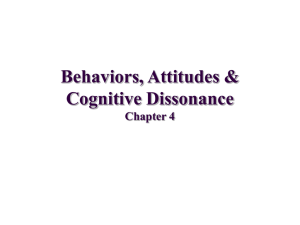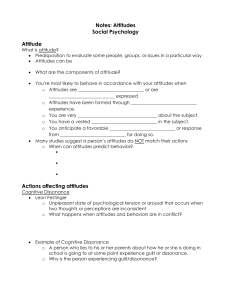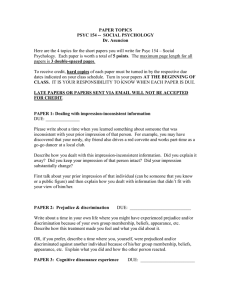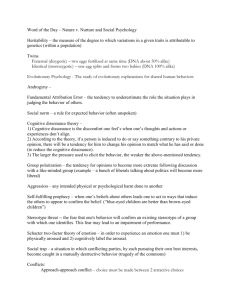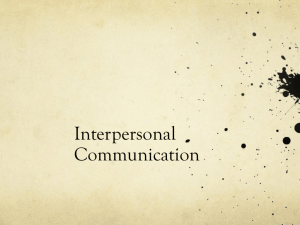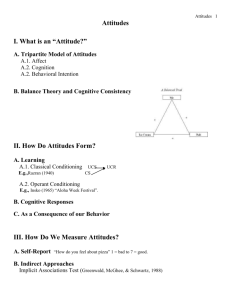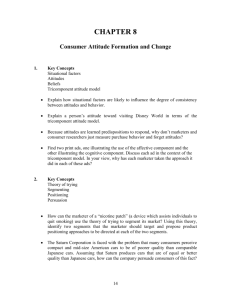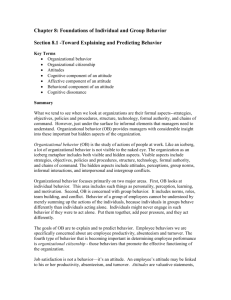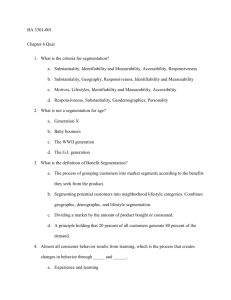How To Study Handouts
advertisement
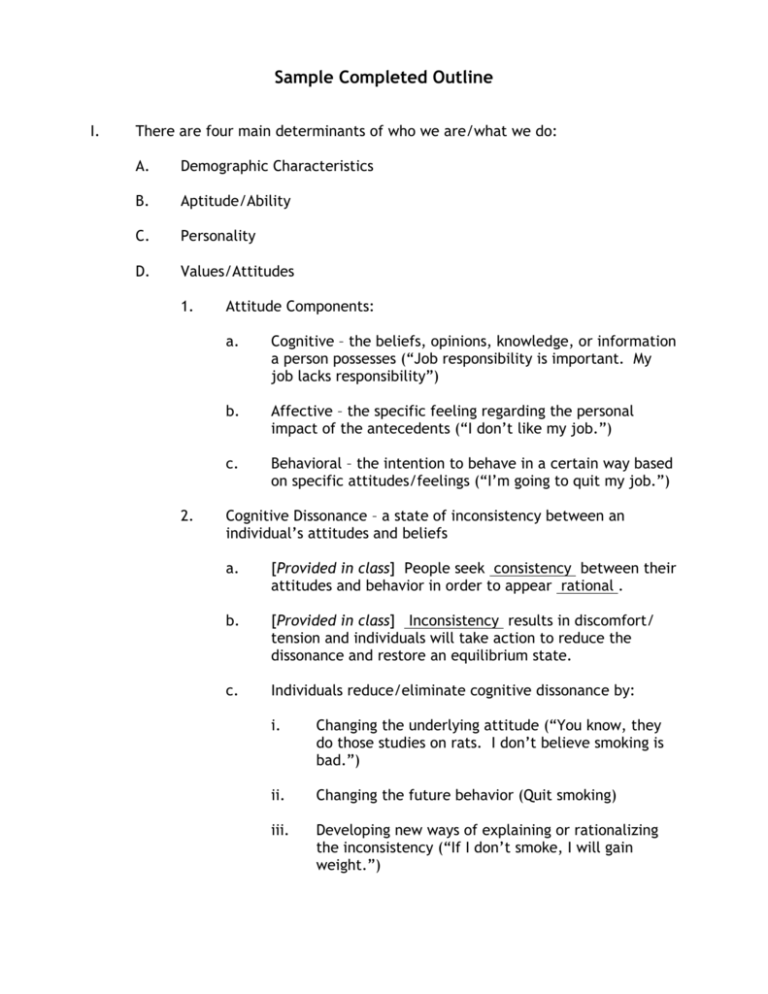
Sample Completed Outline I. There are four main determinants of who we are/what we do: A. Demographic Characteristics B. Aptitude/Ability C. Personality D. Values/Attitudes 1. 2. Attitude Components: a. Cognitive – the beliefs, opinions, knowledge, or information a person possesses (“Job responsibility is important. My job lacks responsibility”) b. Affective – the specific feeling regarding the personal impact of the antecedents (“I don’t like my job.”) c. Behavioral – the intention to behave in a certain way based on specific attitudes/feelings (“I’m going to quit my job.”) Cognitive Dissonance – a state of inconsistency between an individual’s attitudes and beliefs a. [Provided in class] People seek consistency between their attitudes and behavior in order to appear rational . b. [Provided in class] Inconsistency results in discomfort/ tension and individuals will take action to reduce the dissonance and restore an equilibrium state. c. Individuals reduce/eliminate cognitive dissonance by: i. Changing the underlying attitude (“You know, they do those studies on rats. I don’t believe smoking is bad.”) ii. Changing the future behavior (Quit smoking) iii. Developing new ways of explaining or rationalizing the inconsistency (“If I don’t smoke, I will gain weight.”) Sample Fill-In Question / Evaluation Based on the Key Topic Attitudes (86-87), I might give you the following fill-in question: [CHAPTER 4] Identify the attitude components below. ANTECEDENTS ATTITUDE 1. 2. “My job lacks responsibility.” create “I don’t like my job.” RESULT 3. that influence “Job responsibility is important.” I would use the following rubric to evaluate your answer: 1. Beliefs And Values OR Cognitive Component 2. Feelings OR Affective Component 3. Intended Behavior OR Behavioral Component “I’m going to quit my job.” Sample Essay Question / Evaluation Based on the Key Topic Attitudes (86-87), I might give you the following essay question: [Chapter 4] Define cognitive dissonance. When people encounter cognitive dissonance, they experience something that leads to a desire to reduce or eliminate dissonance. What is it? Identify three ways that individuals deal with cognitive dissonance. Your friend states that she is concerned about the environment, but you notice she does not recycle her aluminum cans. Classify each of these possible responses: Response 1: I’m only one person. How much effect can I have? Response 2: You are absolutely right to challenge me. I will never throw another aluminum can away. From now on, they all get recycled. Response 3: I decided the environment is really not as bad off as some people claim. I would use the following rubric to evaluate your answer: Identification/Definition [13] ___ Cognitive Dissonance – a state of inconsistency between an individual’s attitudes and behavior [2] ___ Inconsistency (i.e., dissonance) results in discomfort/tension that individuals try to reduce or eliminate [2] Dissonance Reduction Methods: ___ Change the underlying attitude [3] ___ Change future behavior [3] ___ Developing new ways of explaining or rationalizing the inconsistency [3] Application [12] ___ Response 1: Rationalization [4] ___ Response 2: Behavior Change [4] ___ Response 3: Attitude Change [4]
